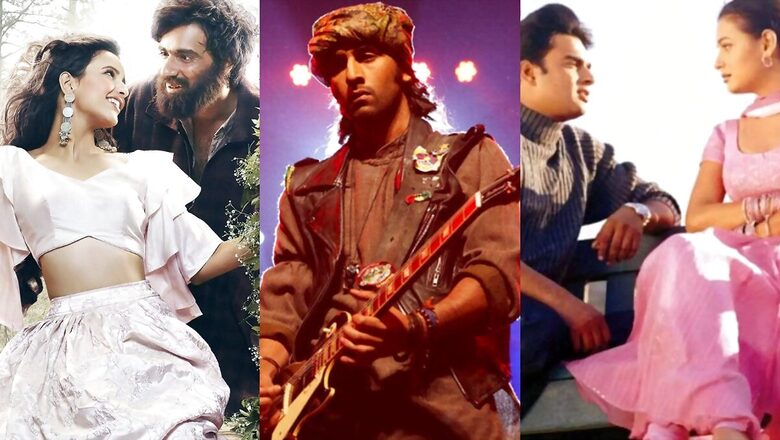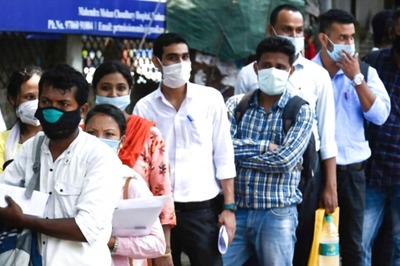
views
Imtiaz Ali and Ranbir Kapoor’s Rockstar was re-released in theatres on May 17 this year, going on to collect Rs 1.20 crore in its fifth week – almost five times its fifth-week collection in 2011. Such were the footfalls and demand that the re-release was extended to a two-week run. Laila Majnu, starring Avinash Tiwary and Triptii Dimri, was initially released in Srinagar on August 2. A week later, due to fan euphoria, it was re-released nationwide, clocking nearly double what it earned during its original theatrical run in just 14 days. Its theatrical run still continues.
On August 30, Rehnaa Hai Terre Dil Mein, starring R. Madhavan, Dia Mirza, and Saif Ali Khan, hit the screens after 23 years, surprising everyone by earning more than 24% of its original opening day collection. Currently, fans are flocking to see Anurag Kashyap’s Gangs of Wasseypur Parts 1 and 2, which were originally released in 2012. Additionally, Salman Khan and Bhagyashree’s Maine Pyar Kiya is also running in theatres. Needless to say, these older films are providing stiff competition to the latest releases.
News18 Showsha breaks down the trend, dissecting why re-releases are in vogue and how they benefit the exhibition sector and the film business along with film buffs. Producer and film business expert Girish Johar calls this “a gamble that’s paying off.” He says, “The first and foremost reason is the lack of new releases. Multiplexes have the space to run re-releases, and producers are keen to promote their previous films and go all out in promoting them if they have the funds.”
According to Johar, producers are playing on nostalgia, and it’s working. “Certain films have a lot of relatability, and some have iconic status in terms of their storytelling and music. Maine Pyar Kiya is celebrating 35 years of its release. This amps up the recall value too. People still want to watch these films because their memories are still etched in their minds. That’s why most of the re-released films are doing decently well,” he states.
Trade analyst Atul Mohan highlights Rockstar and Laila Majnu as examples of films that didn’t fare well in 2011 and 2018, respectively, but are now “doing wonders.” He adds that discounted ticket rates are another factor contributing to their success. “Audiences going to watch these films already like them and know what’s in store for them. That’s why theatres showing these old films are being patronized due to competitive ticket prices. They aren’t as exorbitant as those of current releases. For new films, they might have to shell out Rs 400-500, but they can watch re-releases for Rs 199,” he explains.
Laila Majnu actor Avinash Tiwary reveals that there was always a plan to release the film in Srinagar due to the absence of theatres back in 2018 owing to prolonged conflict. But it was the success of Rockstar and a fan meet-and-greet that acted as catalysts. “Imtiaz sir has been able to show Kashmir the way it wanted to be shown. This is why there’s a lot of fondness for him. According to what I know, Rockstar is the biggest hit in Kashmir in the last year. Laila Majnu enjoys a lot of love there. And with the kind of crazy following it has, it only seemed rational to release it,” he says.
Mohan calls Laila Majnu’s success a “pleasant surprise.” He says, “It qualifies as an exception. It has aged very well, and that’s why audiences wanted to catch it on the big screen this time around. It could also be the Triptii Dimri factor. She has become very popular after Animal and Bad Newz.” For the unversed, the film was pulled out of theatres just three days after its original release.
And what about the others? “The songs of Rehnaa Hai Terre Dil Mein are still popular on social media reels. That’s why Gen Z feels connected to its music. Compared to 2001, Saif and Madhavan are more popular now, and they’ve proved their skills with brilliant performances over the years. The stories of Rehnaa Hai Terre Dil Mein, Rockstar, and Laila Majnu are relatable even for the Gen Z audience. I believe Rehnaa Hai Terre Dil Mein and Rockstar were ahead of their times,” Mohan points out.
Madhavan, however, disagrees but says, “People don’t mind that it’s not technologically up-to-date or that it’s 23-year-old content, which has been offered repeatedly on all TV channels, social media, and OTT platforms many times over. They are still coming to theatres for the communal watching experience, paying good money to watch a love story that has resonated with them for 23 years.”
Ramesh Sippy’s blockbuster film Sholay had a special screening on August 31 at Mumbai’s Regal Cinema. Talking about the audience reaction, Manoj Desai, Executive Director of G7 Multiplex and Maratha Mandir Cinema, remarks, “Sholay is doing fabulous business. We aren’t running older releases yet, but I’ve been informed that the theatres where they’re running are witnessing high footfalls.”
As for Gangs of Wasseypur, Part 1 earned Rs 26.50 crore, while Part 2 earned Rs 18.50 crore originally. With their combined budget being around Rs 38 crore, both films jointly garnered about Rs 45 crore in total. Producer Guneet Monga Kapoor is hopeful that it will finally get its due. “We’ve received reports that it’s running in cinemas with 80% occupancy. I’ve been seeing people wearing gamchas and going to watch the film. Gangs of Wasseypur didn’t get its fair chance,” she says.
Guneet further adds, “The second part was in cinemas for just five days because Ek Tha Tiger had released. It never got its cinema run properly. Even after a decade, the conversation around Gangs of Wasseypur is so strong that I hope it finds its audience. If it does, it’s going to be the biggest success story. We’re still coming out of the pandemic, and so, there’s a habit formation that needs to happen in terms of going back to the cinemas. We’re consuming so much international content, and we should be able to celebrate our own films.”
Shedding light on how re-releases help exhibitors and distributors, Johar says, “Since there are very few new releases, audiences who still want to go to the theatres and have a good time are opting for the re-released ones. It definitely is also a good way to keep the exhibition sector up and running. The content they’re getting from distributors and producers is comparatively less expensive than newer films, and the exhibitor’s share to them is also discounted. There are also marketing ploys and gimmicks involved to ensure that the audience traction remains constant over time. It’s a good way to make sure that audiences keep coming in rather than just theaters shutting down.”
Desai, in a similar vein, informs us, “Let’s put Stree 2 out of this comparison, but there’s a big difference in the occupancy between the re-releases and Khel Khel Mein. Some older film shows are even running house-full. After all, old is gold. This is definitely helping the exhibition industry too because 2024, so far, has been the worst. Bade Miyan Chote Miyan and Maidaan were big films, but we couldn’t earn from any of these films.”
Up next, fans will also get the chance to catch Tezaab, Veer Zara, Taal, and Pardes on the big screen. Sidharth Malhotra recently told us how he would want Shershaah to release in theatres. Karan Johar, at the trailer launch of Bad Newz, spilled the beans on how he plans on re-releasing Kabhi Khushi Kabhie Gham on its 25th anniversary. “I’m really excited with films coming back. I was so happy when Rockstar re-released and received so much love,” he told us.
Desai, on the other hand, is leaving no stone unturned to get Mukul S Anand’s 1992 film Khuda Gawah, starring Amitabh Bachchan and Sridevi, re-released. “I want to run Khuda Gawah in my theatres. The film is with Shemaroo, and I don’t know if they want to re-release it. I’ve reached out to the distributor, so let’s see what happens. I’ll also speak to Mr. Chetan Maroo, the MD of Shemaroo Entertainment Pvt. Ltd.,” he informs.




















Comments
0 comment